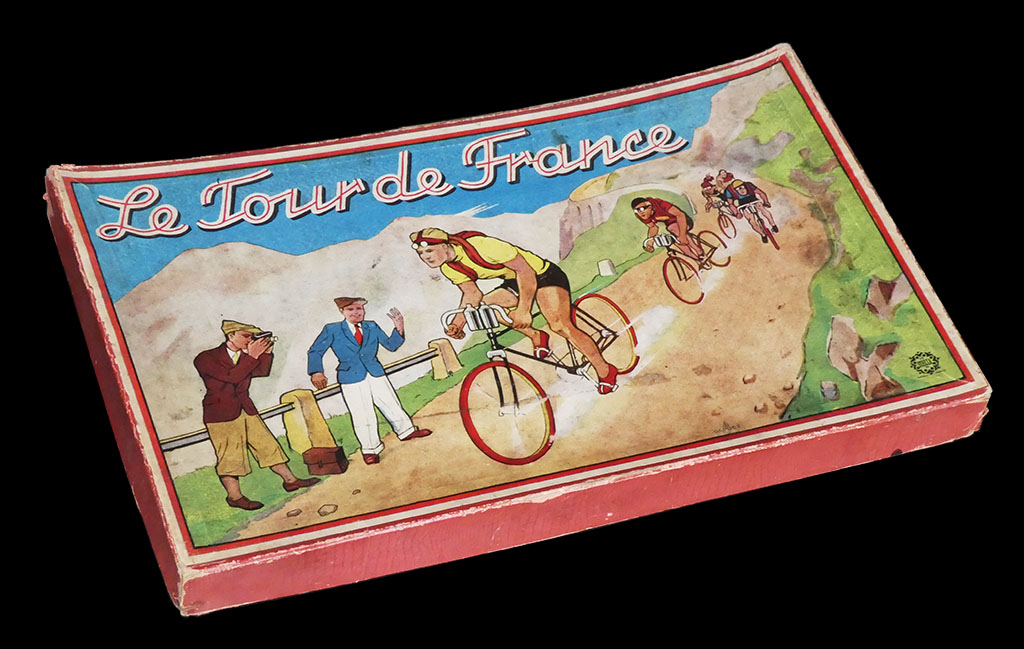
LE TOUR DE FRANCE
Stella, France, 1924

This is a game which I was not really sure if I had to treat as a version of this other game or as a different game. After some thought I decided that I would treat them as independent games. Of course, both games share the title (which is not really significant, since "Tour de France" is the most common name for a cycling game), the editor (why would someone publish two games with the same name?), and, most strikingly, both are based on the parcours of the Tour de France of 1924. Scroll down for a comparison of the two games.
It can be generally assumed that if a game follows exactly the stages of a particular edition of a race, the game was published, or at least designed, in the year that race took place. Why would anyone design a game based on last year's race if it can be based on this year's? However, we must keep in mind that the process of designing, publishing, and distributing a game may take a few months, while the stages of the Tour might only have been announced a few weeks before the start of the race. While it is sure that a game based on the Tour of 1924 cannot have been designed before the stages of that year's Tour were known, it is only (highly) probable that the game was designed before the stages of the next tour were announced. There are many reasons why the release of a game can be delayed.
In the case of a double edition like this one, with two games by the same publisher based on the same edition of the Tour, the question is obvious: Were both games released simultaneously (and if they were not, which was first)? I cannot offer an answer to these questions. Any suggestions are welcome.
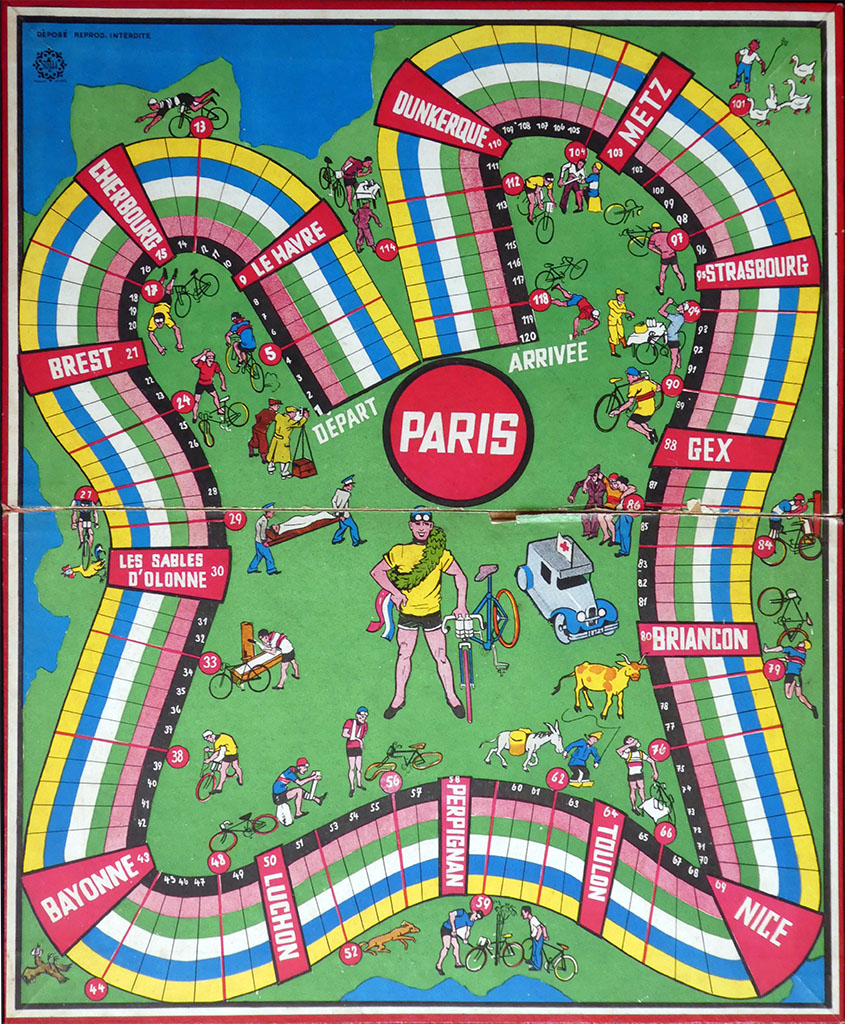
This board has five lanes (one lane less than the bigger version), the game being for two to five players. It is also smaller: it measures 47 x 38.5 cm (the box, also smaller, measures 40 x 25 x 4 cm). The length of the race is also smaller, only 120 squares.
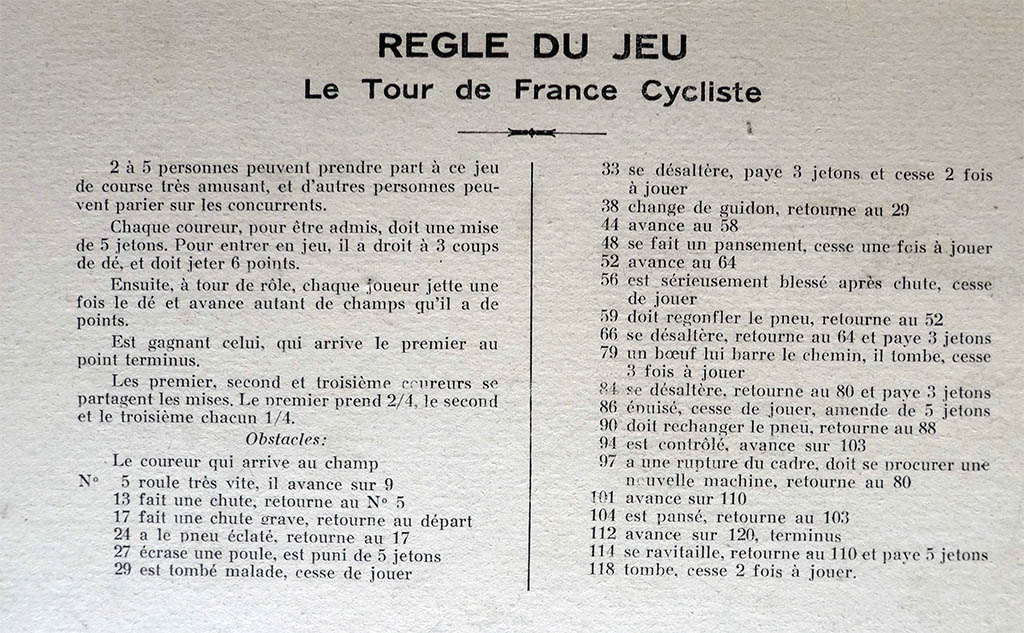
Unlike the bigger version of the game, only one way to play is offered in this case. It is a simple roll-and-move game (a map game, actually), albeit one in which players win or lose counters and in which onlookers may bet on the outcome. The game is played with just one die, and there are 25 race incidents in a 120-squares-long board.
Of course, there are only five cyclists in this game (instead of six).
Each rider on its own lane
It looks like the the yellow rider has been dropped in the Pyrenées...
... but is back in the fight a little later on.
Final sprint
Of course the game board has been completely redrawn.
Redrawn, yes, but most probably by the same illustrator.
The box, however, might be from a different hand.
What has not changed between the two versions of the game is the Pelissier look of the riders. Of course, 1923's Tour de France win by Henri Pelissier was the first by a Frenchman since 1912, which made him a national hero; that was possibly a good reason to release a Tour de France game. (As is widely known, the 1924 Tour de France did not go so well for the Pélissier brothers: it is the Tour when Albert Londres interviewed them for the infamous article "Les forçats de la route" after they retired from the race).
Comparison of the two (versions of the) game(s):
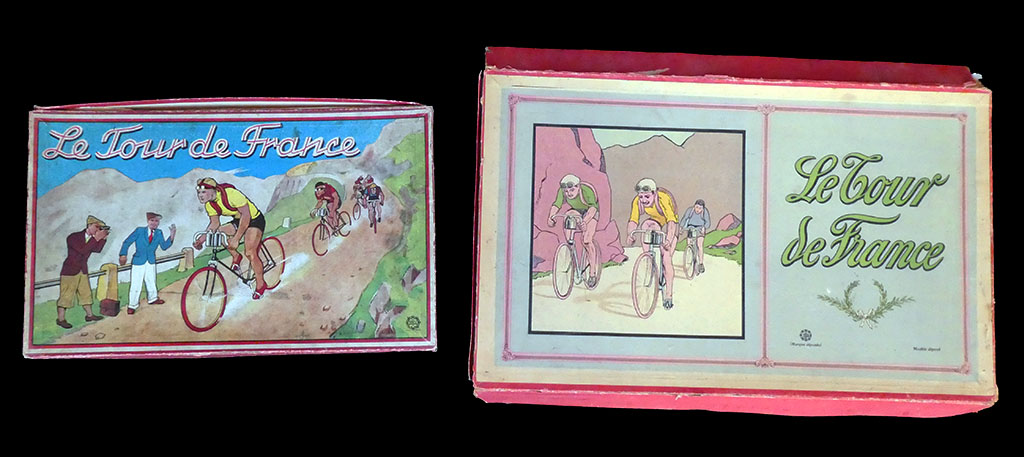
Left
box: 40 x 25 x 4 cm; right box: 53 x 32 cm.
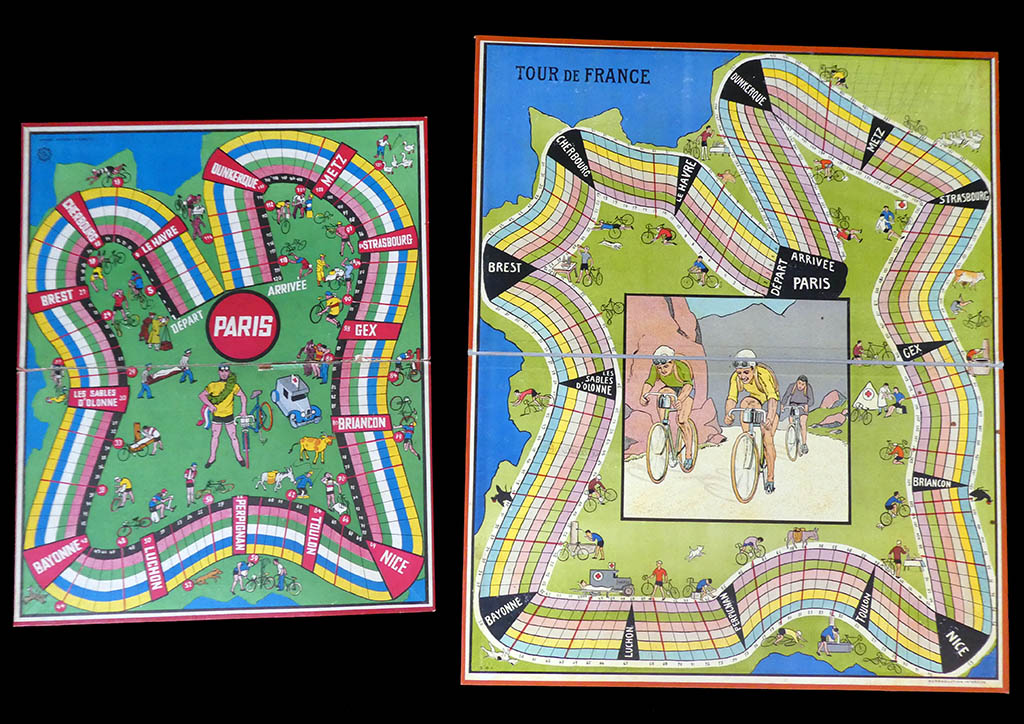
Left board: 47 x 38.5 cm; right board: 62 x 52 cm.
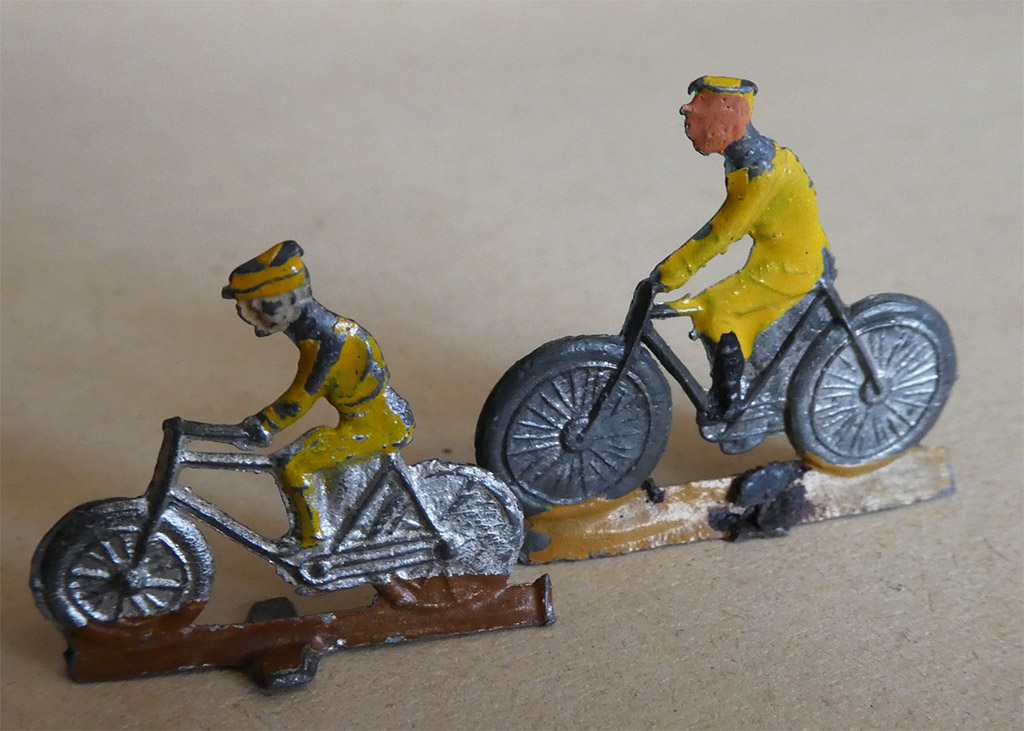
25 vs 32 mm riders.
Thanks, Marc, for this version of the game!
Description written in June 2025.
 |
 |
 |
 |
 |
|
CULTURE IDEAS |
TOTUM REVOLUTUM THUMBNAILS |
NAMES ALPHABETICAL |
CATEGORIES LISTS |
WHAT'S NEW BLOG |